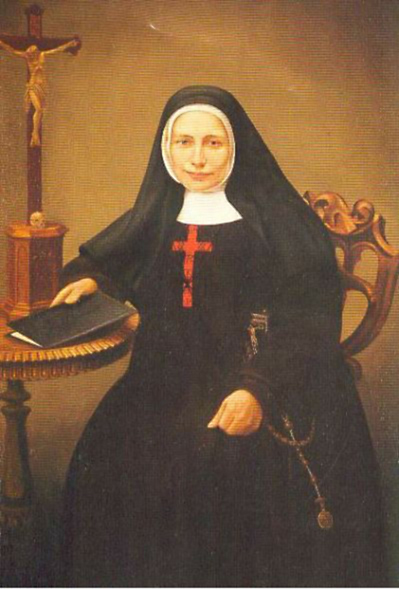
December saint: Blessed Mary Frances Schervier
There is more to life than economic and social privilege. For Blessed Mary Frances Schervier, her worldly advantages were overshadowed by the spiritual ones she chose to spend her life following instead.
In 1819, Mary Frances was born into a prominent and distinguished family in the town of Aachen, which was then located in Prussia. Her father, a successful factory owner, was also vice-mayor of their city. Her mother, who was French, was the god-daughter of Emperor Francis I of Austria. However, neither of these things resulted in the family leading an ostentatious lifestyle; on the contrary, Mary Frances’ mother ran a strict household and encouraged her daughter’s prayerfulness and charitable works. Mary Frances would often visit her father’s factory to distribute food and clothing, seeing firsthand how much suffering there existed among the poor.
Her duties increased at the age of 13 when both her mother and two sisters died of tuberculosis. In addition to becoming the homemaker for her father, she became increasingly aware of the desperate plight of the most vulnerable. When some other ladies of Aachen formed a society for the relief of the poor, Mary Frances asked her father for permission to join. Together these women nursed the sick and fed the hungry. Eventually, Mary Frances and four others became members of the Third Order of St. Francis.
In 1845, when Mary Frances was 26, her father also died, and a family friend, who knew her well, counseled her to serve God even more closely. At first, she considered joining the Trappistines, but instead chose to establish a new religious community devoted to the care of the poor. Led by Mary Frances, five women became the nucleus of the community which would become known at the Poor Sisters of St. Francis.
For the next few years, the Poor Sisters did indeed live up to their name. Not only did they minister to the poor and sick, but they themselves lived lives of extreme poverty. Any means they had came entirely from donations, which began to decline when some benefactors curtailed their donations because the sisters began to minister to prostitutes. Nonetheless, more members were attracted to the order, and in 1851, they received formal recognition as a religious congregation.
They began to spread their work from Europe to the United States. In 1863, Mary Frances – who was now the order’s superior – arrived in New Jersey to help her sisters nurse soldiers wounded in the American Civil War, and St. Mary Hospital in Hoboken was founded to meet this specific need. That hospital still exists, although in 2007 its name changed to Hoboken University Medical Center.
When Mary Frances Schervier died in 1876, there were 2,500 members of her congregation worldwide. In 1959, the order became an independent congregation called the Franciscan Sister of the Poor, headquartered in Brooklyn, New York. They still staff hospitals and homes for the aged.
Mary Frances Schervier was beatified in 1974. Her feast day is Dec. 14.
Sources for this article include:
catholic.org/saints/saint.php?saint_id=46069
franciscanmedia.org/saint-of-the-day/blessed-mary-frances-schervier
franciscansisters-en.sfp-poor.org/about-us/frances-schervier.html

